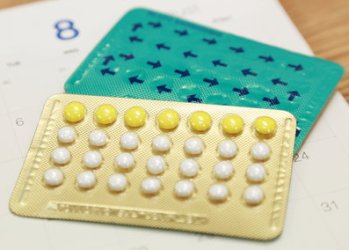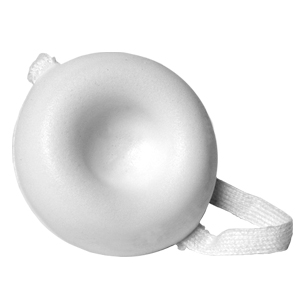Barrier contraception is the physical prevention of sperm reaching the uterus and thereby preventing pregnancy. Among the many forms of barrier contraception the most commonly used is probably the condom; in addition there is the female condom, the diaphragm, the cervical cap and also the contraceptive sponge.
Like other barrier , the contraceptive sponge also physically prevents the union of the male sperm and female egg. However it is not strictly a barrier method since it also depends upon the use of Spermicide for its efficacy.
 While the sponge acts as a barrier, it also absorbs the semen preventing it from traveling further up the reproductive tract. It further acts by killing sperm due to its Spermicide content.
While the sponge acts as a barrier, it also absorbs the semen preventing it from traveling further up the reproductive tract. It further acts by killing sperm due to its Spermicide content.
The Sponge consists of a soft, circular device usually made from polyurethane foam and is required to be fitted over the cervix.
The benefits of a contraceptive sponge
- It has a triple pronged approach to preventing pregnancy – it stops sperm and prevents it from entering the uterus, it absorbs and soaks up the sperm and it also kills the sperm.
- It is an effective form of contraception so long as it is used and inserted correctly.
- Many women find that it is easy to use.
- Unlike hormonal forms of contraception this is one form of contraception that can be used immediately.
- There is no requirement for medical prescription (unlike other barrier methods such as the cervical cap).
- It is an inexpensive form of birth control.
- It is easily reversible so if a woman decides to get pregnant she simply stops using it.
- Many sponges come with built in Spermicide and only have to be wetted in order for the Spermicide to be activated.
- It is disposable.
The possible cons of the contraceptive sponge
- This form of contraception is not seen to be as effective as many other forms of contraception since it is often seen that mistakes are made in proper use and insertion or placement of the device.
- Though inexpensive it is not reusable and is a recurring expense since a new device has to be used after each act of sexual intercourse.
- It is not very widely available and many pharmacists tend not to stock the device.
- Unlike the condom the contraceptive sponge offers no protection against sexually transmitted diseases, and so it cannot be used as a form of STI prevention.
- Some women find that the use of such sponges is uncomfortable since it requires insertion into the vagina and side effects could include headaches, increased appetite, and, very rarely, blood clots.
- In some very rare cases, this form of contraception could cause Toxic Shock Syndrome (which is also seen rarely in the case of tampon use) if the device is left in place for a time longer than prescribed to be safe. Such side effects are rare but they should be kept in mind.
- This is not a long term form of contraception and those women who need protection on a longer term may find that hormonal methods of contraception make more sense for them than the contraceptive sponge.





